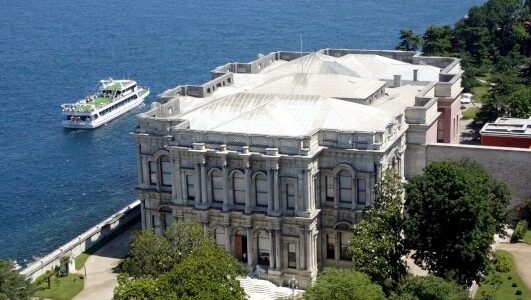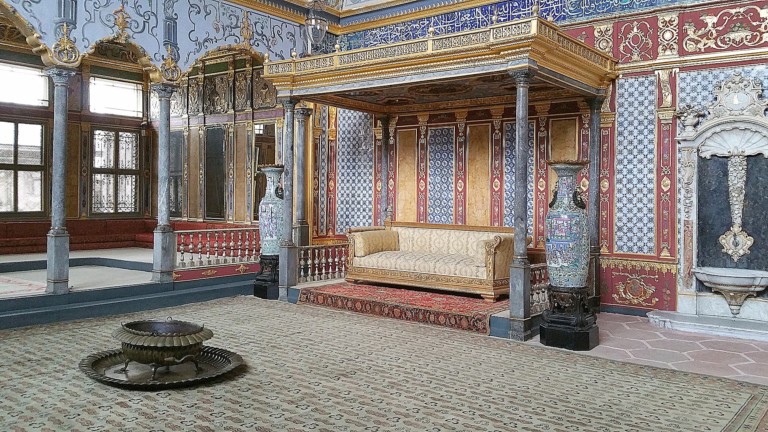In 1453, the Ottoman Empire triumphantly stormed into Constantinople to capture the strategically important city. From then on, for 465 years, the sultans and their advisors managed lands spanning nearly half the world from their ruling capital. Indeed they were one of the most successful empires of all times and definitely changed the course of history. So what ultimately caused their demise?
Well, in the beginning, Ottoman sultans and their armies prided themselves on being fighters. Despite gaining vast riches beyond their imagination, tactical warfare and occupation of new lands was still a priority that they did extremely well. With drive and focus, early Ottoman sultans successfully managed their empire with confidence but by the 18th century, this changed.
Obsessed with their heir bloodline, the rulers gradually withdrew from public life and confined themselves to the walls of their palaces. Taking their eye off the ball, they ignored the intricate but important details of managing their empire and instead, used their riches to lavish themselves in an indulgent lifestyle.
To keep up appearances to the rest of the world, they constructed a succession of royal Ottoman palaces in Istanbul, primarily on the shores of the Bosphorus and Golden Horn. By the early 20th century, the Ottoman Empire was broke, disbanded and known as the sick man of Europe. Their prolific presence on the international scene finished but they did leave behind, the royal palaces that these days, are iconic landmarks of Istanbul.
5 Historical Ottoman Palaces in Istanbul
Dolmabahce Palace: The Most Extravagant of Them All
To understand the self-destructive impact of their excessive spending, one should visit Dolmabahce palace in the Besiktas district. It is quite unbelievable that at a time when the Ottoman Empire riches were quickly dwindling that they should build this extravagant display of wealth.

The empire’s 31st Sultan, Abdulmecid, ordered its construction in 1843 because the former Topkapi Palace lacked contemporary styles and modern luxuries when compared to other magnificent Royal residences in the western hemisphere.
Classed as one of the most glamorous palaces in the world, when comparing it to today’s currency, the cost of construction was a staggering 1.5 billion USD. Partly financed by foreign loans, Dolmabahce palace was mostly responsible for the eventual bankruptcy of the Ottoman Empire, and when people see the interior design and décor, it is easy to understand why.

Including 285 rooms and 6 Turkish baths, , it included the latest inventions of central heating and gas lighting making it modern and sophisticated, compared to the former Topkapi Palace. Throughout the building, 14 tonnes of gold cover the ceilings and pure crystals line the elaborate staircases.
The world largest chandelier sits in the ceremonial hall, and 202 priceless oil paintings adorn the walls. 131 Herkes silk carpets, an extremely expensive Turkish brand, cover the floors, and expensive French furniture finishes the luxurious look that only royals were worthy of. Touring the Dolmabahce Palace is without a doubt, a jaw-dropping experience.
Topkapi Palace : The Original Royal Residence

This large sprawling structure dating from 1460, in the heart of the old city of Istanbul, is neither as lavish nor extravagant as Dolmabahce yet worth visiting, because it was the first of the Ottoman palaces in Istanbul from which they ruled.
With four courtyards and the standard separate harem section, at its prime, it was like a fully functioning centre housing roughly 20,000 people. Visitors explore include the kitchens, circumcision, armoury, jewellery, pavilions, kiosk, and before mentioned harem that conjures up an air of mystery with its stories of eunuchs and Ottoman princesses.

The architecture is impressive but often surpassed by ancient artefacts and personal items of prominent members of the Ottoman Empire. Jewelry on display includes gifts from ancient foreign rulers while the star exhibit is the spoon makers diamond that is the fourth largest in the world.
European, Chinese, and Japanese porcelain also take pride of place but representing the first sultan’s dedication to warfare, the armoury section holds many elaborate weapons and armour suits used. Portraits of Sultans and their original clothing are also extremely interesting eye openers, but for most, the highlight is the sacred relic’s room containing items from the Prophet Muhammad including his staff, prayer mat, and sword.

The Destruction of Ciragan Palace
Built in 1867, when the Ottoman Empire’s wealth was dwindling, Ciragan Palace seems to have been more of a curse than a blessing because, Abdulaziz, the sultan who commissioned it died inside, 4 years later, shortly after he was dethroned.

The next resident Sultan Murat the 5th only reigned for 93 days because of suspected mental illness. His brother spent most of his time in the palace under house arrest, and in 1910, a fire destroyed most of the palace, leaving it to be a derelict shell.
These days it is worth seeing for its lavish décor, but you will need to pay more than a museum ticket because, in 1989, a Japanese company restored and refurbished it. Now belonging to the Kempinski luxury hotel chain, the price of their lavish suits makes it one of the world’s most expensive hotels.

Beylerbeyi Palace
Built in the 1860s, the purpose of this palace meaning “lord of lords” was just a summer residence to entertain visiting foreign dignitaries. Compared to the former Dolmabahce palace, its décor is relatively straightforward. The most elaborate feature being a fountain and pool in the reception hall. However, likewise, crystal chandeliers and expensive Herke carpets are a focal feature throughout.

The intrigue about the palace probably sits with what went on behind closed doors. As a building for entertaining, some of its most famous visitors include the Duke and Duchess of Windsor and Princess Eugene of France who received a face slap from the Sultan Abdulaziz’s mother for daring to enter the reception on his arm.
Yildiz Palace
Sultan Abdulhamid the 2nd built Yildiz Palace in 1880 and massive expansion took place later since the Sultan feared the already constructed Dolmabahce wasn’t safe from a sea attack. Commissioning an Italian architect, it was the fourth seat of the government after Dolmabahce, Topkapi and their first palace in Edirne.

Consisting of many separate landmark structures, it even included a theatre and opera house as well as a porcelain factory. The reception area of the sultan’s residence garners the most attention with its large mirrors, various surfaces made of mother of pearl and a 400 square meter carpet hand woven by more than 60 weavers.
Further Reading: A private daytime tour visits all these Ottoman palaces in Istanbul and more. Make a custom booking here or alternatively, see our full list of day tours in the biggest and best city in Turkey. You may also be interested in reading more articles on our blog all about travelling in Turkey.






